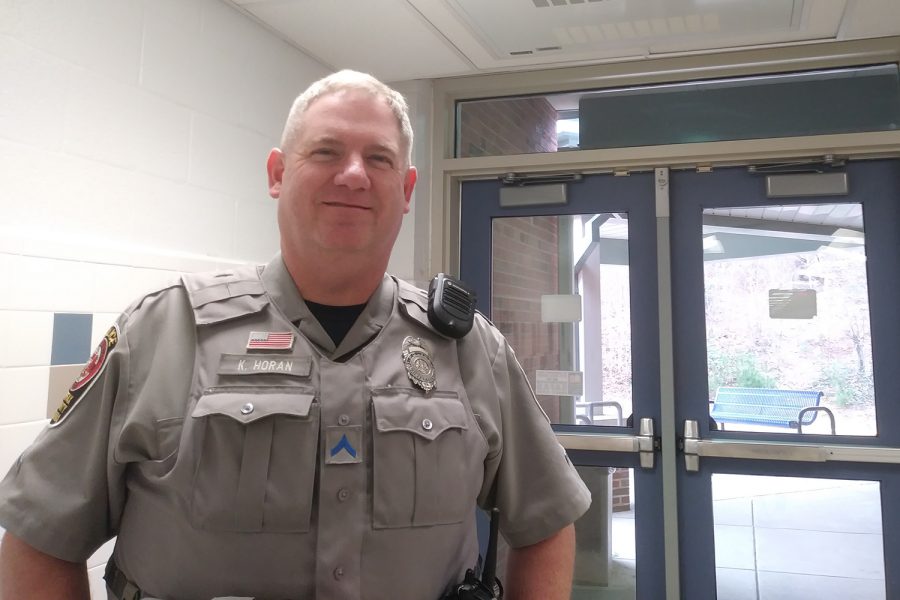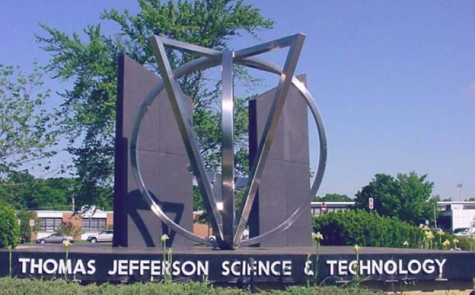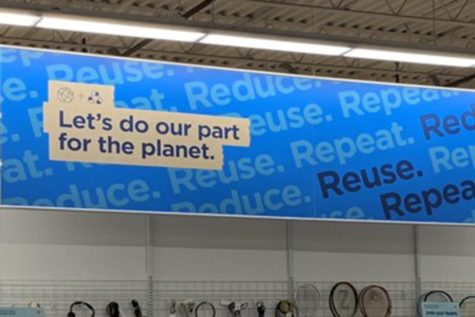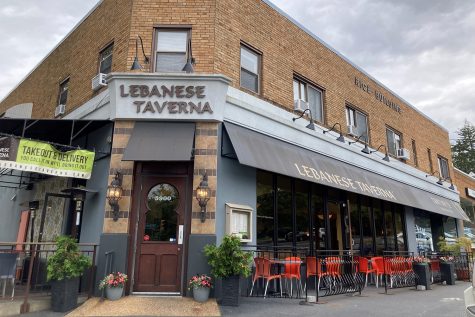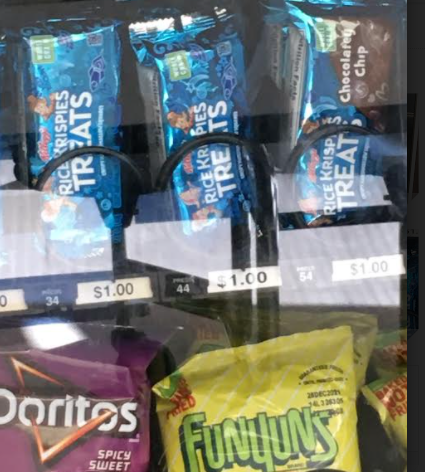As Virginia Cracks Down on Police in Schools, Longfellow’s SRO Defends Role.
Officer Horan has been an important part of Longfellow’s community during his tenure as School Resource Officer.
A new state law will reform the role of police in schools. The law comes in response to Virginia leading the nation in charging students with crimes for misbehavior that might have merited a visit to the principal’s office or a detention before officers started roaming the halls.
The change prohibits police from charging students with the broadly interpreted crime of “disorderly conduct” while at school and gives principals wider leeway to determine when officers should be involved. It comes amid calls, in the wake of nationwide protests following police killings of George Floyd and Breonna Taylor, for the outright abolishment of a police role in schools because of the disproportionate impact they have on Black and Hispanic students.
Longfellow’s School Resource Officer, Kevin Horan, though, still sees a role for SRO’s in schools.
“I think it’s important for students to know that SROs are not in the school to arrest everyone,” said Officer Horan. “Since very few students are committing crimes, SROs are able to have a lot of positive interactions. When a crime does occur, an SRO can spend more time on an event compared to a regular police officer. An SRO can work to get a better picture of what occurred and look for the best option to resolve the matter. Many of those options help keep the student from being arrested. So, in a sense, SROs work hard to be more like a teacher-mentor-counselor-friend rather than a law enforcer.”
But civil rights groups such as the Advancement Project and the Alliance for Educational Justice argue that “in the nearly two decades since the 1999 Columbine High School shooting, calls to increase school safety have resulted in an increasingly punitive system of school discipline aimed at students of color, and that school policing has failed to make students of color safer.”
According to the Center for Public Integrity, “Virginia schools in a single year referred students to law enforcement agencies at a rate nearly three times the national rate. Virginia’s referral rate: about 16 for every 1,000 students, compared to a national rate of six referrals for every 1,000 students. In Virginia, some of the individual schools with the highest rates of referral — in one case, 228 per 1,000 — were middle schools, whose students are usually from 11 to 14 years old.”
Police presence in schools has disproportionately affected students of color (Black students represented 23.9% of the student population but 38.3% of arrests in 2015) and the disabled. According to Public Integrity, “About 26 percent of all students referred to law enforcement nationally were special-needs kids — kids with physical or learning disabilities — even though these kids represent only 14 percent of U.S. enrollment.” In Virginia, 30% of arrest referrals in 2015 were disabled kids.
These numbers were cited by lawmakers in passing Virginia’s new school police reforms.
In Fairfax County, resource officers are sworn police officers who are assigned to specific schools. They are trained within the first six months of their assignment in mental health and crisis work, disability awareness, implicit bias, restorative justice, and cultural competency training, and must renew their training every two years.
According to the Fairfax County Public Schools website, “SROs are supposed to maintain the safety of students and faculty, provide a safe and positive learning environment and to promote mutual respect between law enforcement, school security staff, school administrative staff, students and their families.”
SROs help teachers and staff with emergencies and also work with them to come up with plans to lower student crime. They also take part in educational opportunities, such as teaching students the danger of drugs and gangs.
According to Officer Horan, “An SRO doesn’t walk around the school looking for … violations. If an SRO comes across obvious … violations that are an ongoing issue or could become safety concerns, the SRO could start with a gentle reminder to help bring the person back into compliance. If there is a need to escalate the issue, the SRO would essentially make a report to the school staff for them to look into the matter.”
Although SROs are not supposed to be involved with the enforcement of school rules or disciplinary infractions that are not violations of law, they can search a student for “probable cause,” which means that they can search a student if they have some evidence to suspect a crime is being committed. An officer searching a student without actual evidence of a crime would be against the school district’s Memorandum of Understanding with the police department, which can be found on the FCPS website. But “probable cause” isn’t defined, and nationally, police have been criticized for interpreting it broadly.
If a student is accused of a crime, SROs can only question students with the consent of their legal guardian unless a violent crime that threatens lives is taking place. Questioned students keep their Miranda rights, which include the right to remain silent and the right to have an attorney or have one provided to them if they cannot afford one.
The school system has a restorative justice program in place, which aims to keep kids out of the criminal justice system if possible. The school district has not released information on the demographics of kids who are allowed to participate in that program vs. being arrested.
Officer Horan said the program is not run by police, applies to only certain offenses, and students are only allowed one chance to participate before being charged with a crime instead.
In the 2018-19 school year, school resource officers in Fairfax County reported using force against three students, all of whom were white, two identifying as Hispanic.
According to the school district’s SRO annual report, student arrests dropped by 48% from 650 in 2017-18 to 335 in 2018-19. According to the report, student arrests lined up with the overall demographics of the school population, but specifics were not provided.
In 2015, 41% of cases where the Fairfax County police department used force against someone outside of schools involved Black people, even though Black people only made up 9% of the population.
The question of whether students are OK with the presence of police in schools has not been outlined in the district’s annual report. It reported that 85% of students reported “feeling safe” in their school in 2018-19, implying that it was due to the presence of SROs without citing evidence that their presence was a contributing factor. Why the other 15% of students did not feel safe was also not addressed. According to an article by the Daily Progress, although more than 70% of students across all high schools in Virginia said that SROs make them feel safer, 32.5% of Black students disagreed, compared with 25% of white students.
SROs carry guns, handcuffs, and other equipment around school. “This is necessary because SROs are still police officers. We just have a special assignment,” Officer Horan said. “If need be, I am prepared to respond to emergencies in the school or out in the neighborhood. Thankfully, I don’t need to use all that equipment every day. But if there is a time that it is needed, it has to be readily available. Police officers, like other professions, rely on muscle memory during stressful situations. We train with our equipment and keep it in a certain way so that if needed, our body doesn’t have to stop and think about where something is. We can reach for something and know that it is there and ready. Also, after the dismissal bell rings, SROs still have work to do outside of school. We have to be prepared to do everything that a regular police officer does.”
While Fairfax County schools are shut down due to the COVID-19 pandemic, school resource officers have been reassigned to regular police duties.
Officer Horan said that when in-person school returns, his role is just one part of the school’s safety plan. “If everyone puts all the responsibility on the SRO, then we are failing each other,” he said. “The SRO can’t be everywhere at once, so it is your responsibility to either take action, if appropriate, or report an issue.”
“I personally believe that SROs are a valuable part of the school system,” Officer Horan said. “We are just one part of the learning process that guides young adults toward becoming productive members of society.”


